How the Women of The Wing Crafted Their Own Workspace
It was just two and a half years ago when The Wing popped up in New York City, opening its first coworking space in the Flatiron district. These days, carrying on the spirit of the women’s club movement, there are eight locations in five cities around the U.S., with a London location opening in the fall, and over $117 million in funding. All the positive momentum has meant a rapidly growing number of staff members—what started as four people is now more than 150—spread out among various buildings in SoHo, so a home base was in order. Thus, the new headquarters has arrived.
The Wing HQ occupies all four floors of a 22,000-square-foot building in the East Village, making it one of the only spaces in the city to be occupied by a single brand. The building was originally built in 1854 and designed by the architect William Schickel in the neo–Italian Renaissance style, with Philadelphia pressed-brick facades ornamented in terra-cotta. And it has many historical ties. It began as a health care facility for German immigrants who otherwise couldn’t afford medical treatment, and later became Lenox Hill Hospital. In 1880, a hospital benefactor, Anna Ottendorfer, donated $68,000 to construct a wing devoted to women. (Yes, really!)
Laetitia Gorra, head of The Wing’s interior design, is the mastermind behind the headquarters’ look. She and her team utilized many of the same elements found at its other locations. There is custom ergonomically designed furniture, communal workspaces and kitchen, a lactation room, a quiet room, signature branded wallpaper and tiles, high ceilings, and lots of natural light. The 10 conference rooms in the space nod to fictional and historical female figures from games (Ms. Pac-Man, Metroid) to books (The Baby-Sitters Club, The Joy Luck Club, Nettie, Celie) to schools (Spelman, Radcliffe). There's even an outdoor space and patio.
The move is an exciting moment for the business, which just added many new hires to their executive leadership team—all women, and a majority of them mothers of young children. We love how the business continues to build an empire with a strong aesthetic while still maintaining a distinctive character in each location. Here are some of the ways the women-centric community has made that happen.
Maintaining original elements

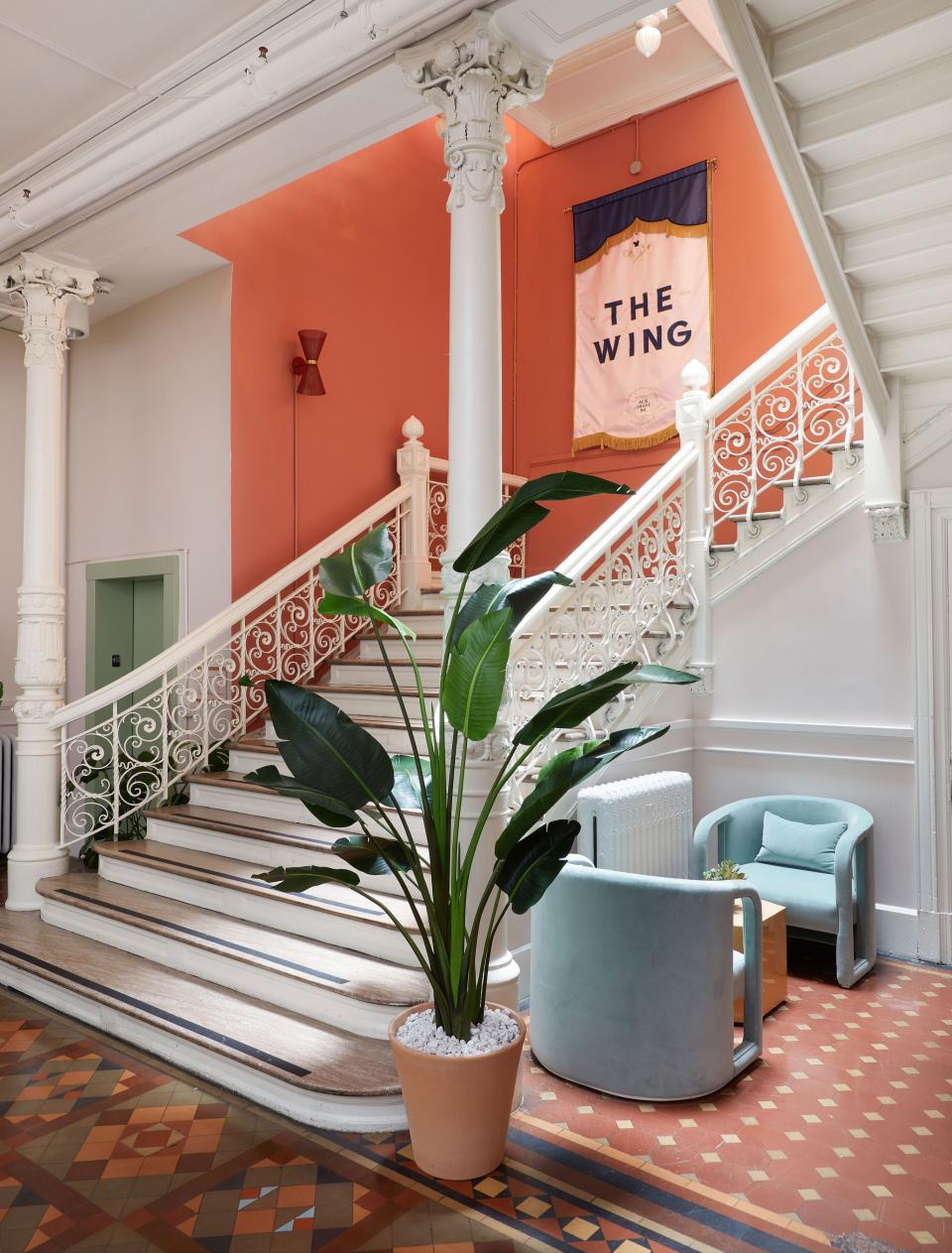
The grandeur of the interior—from the height of the ceilings and incredible neoclassical-style molding to the bright skylights and grand staircase—all felt extremely Parisian, so the interiors team designed the space around those elements. Since the building was extremely well-maintained, too, the original terra-cotta colored tiles on the ground level and first floor were very influential in the color palette.
Creativity and customization counts
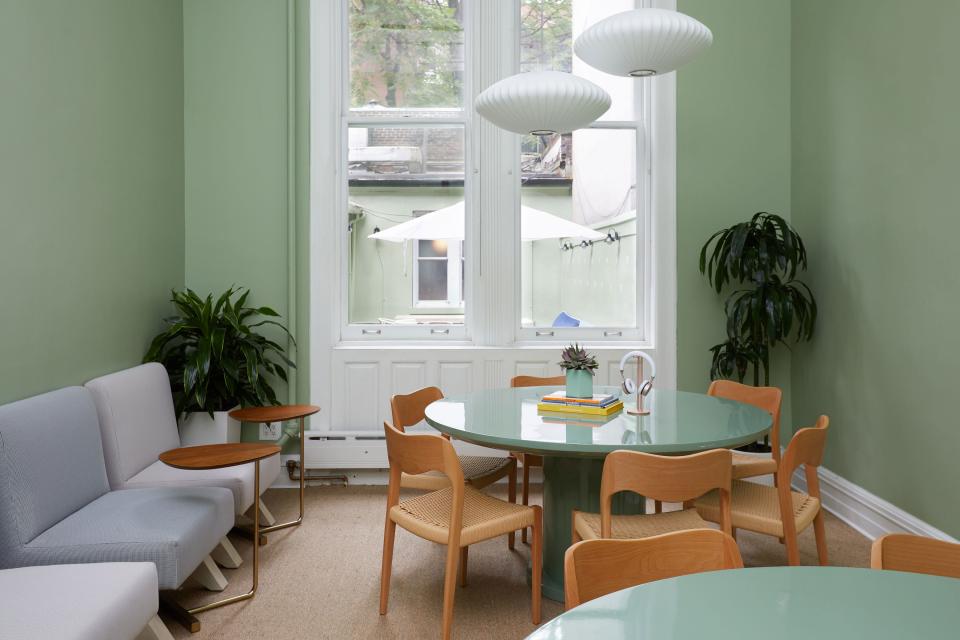
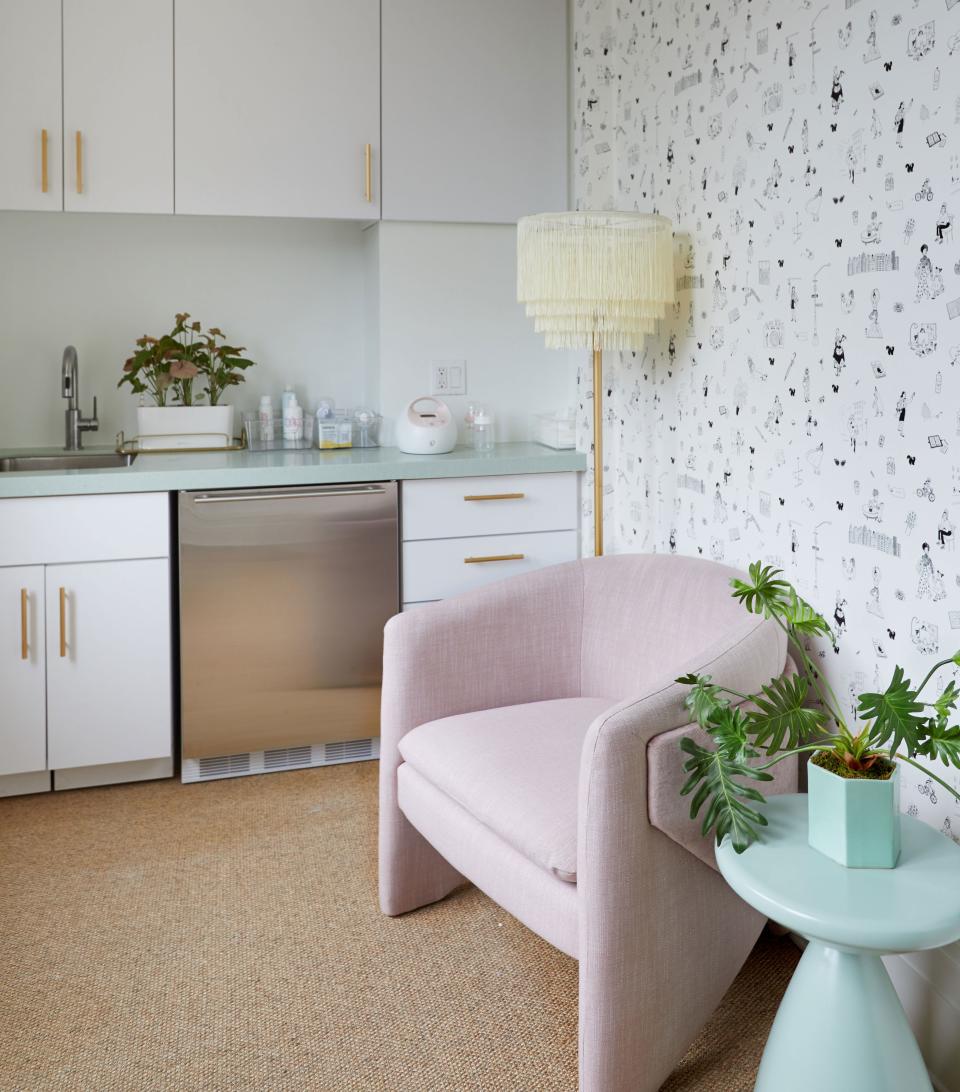

Time was a major constraint for the design team, so they avoided demoing the existing space and historic flooring. It was important to be creative. In the meeting rooms, sisal flooring was used to help with acoustics and to add softness. Plus, they fitted the meeting rooms as they did in other Wing spaces, with large tables, TVs with conference-call capabilities, and whiteboards for brainstorming sessions. In the areas designated for more visual teams, like the interiors and the brand team, they covered the walls in cork. Other ways they made the space feel like home? Custom-designed wallpapers, furniture, and fabrics.
Playing with paint and color
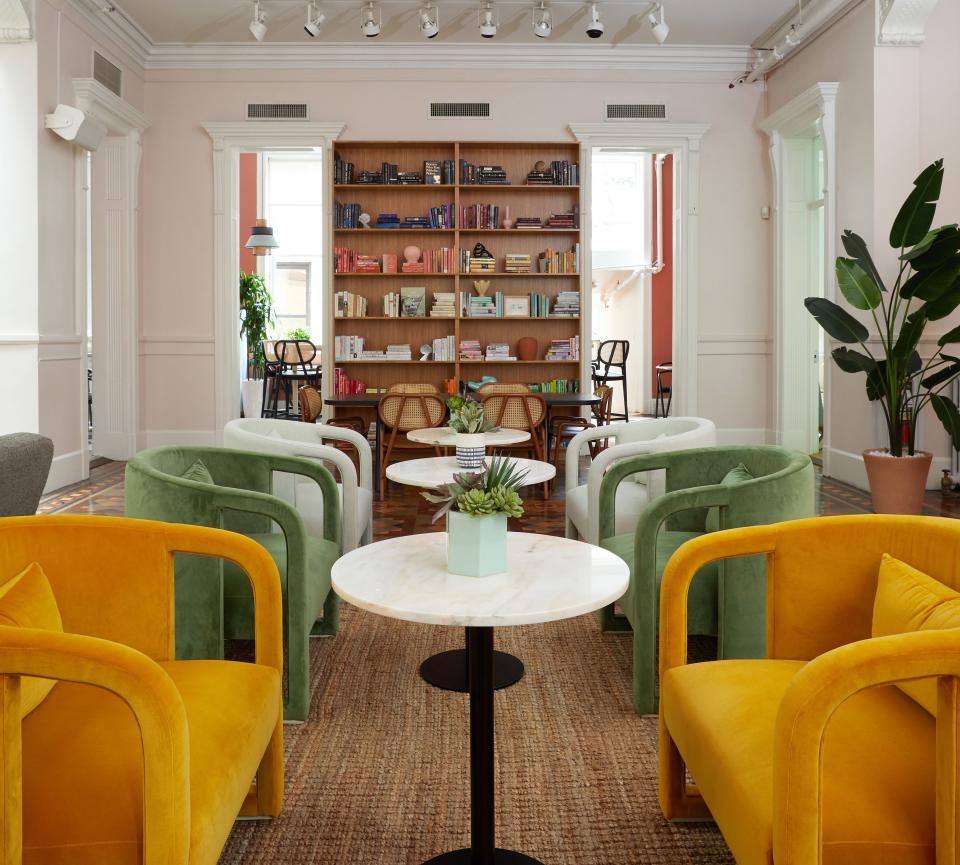

The team played with paint and contrasting colors not only from one room to the next but also within each room. With the time constraint, it was a quick and easy way to add visual interest and differentiate the spaces. Since the ceilings are so high on the ground level, the team cut the height with two different colors and incorporated large unique light fixtures that were hung at a low height—both elements are used to help visitors feel more grounded in the large rooms.

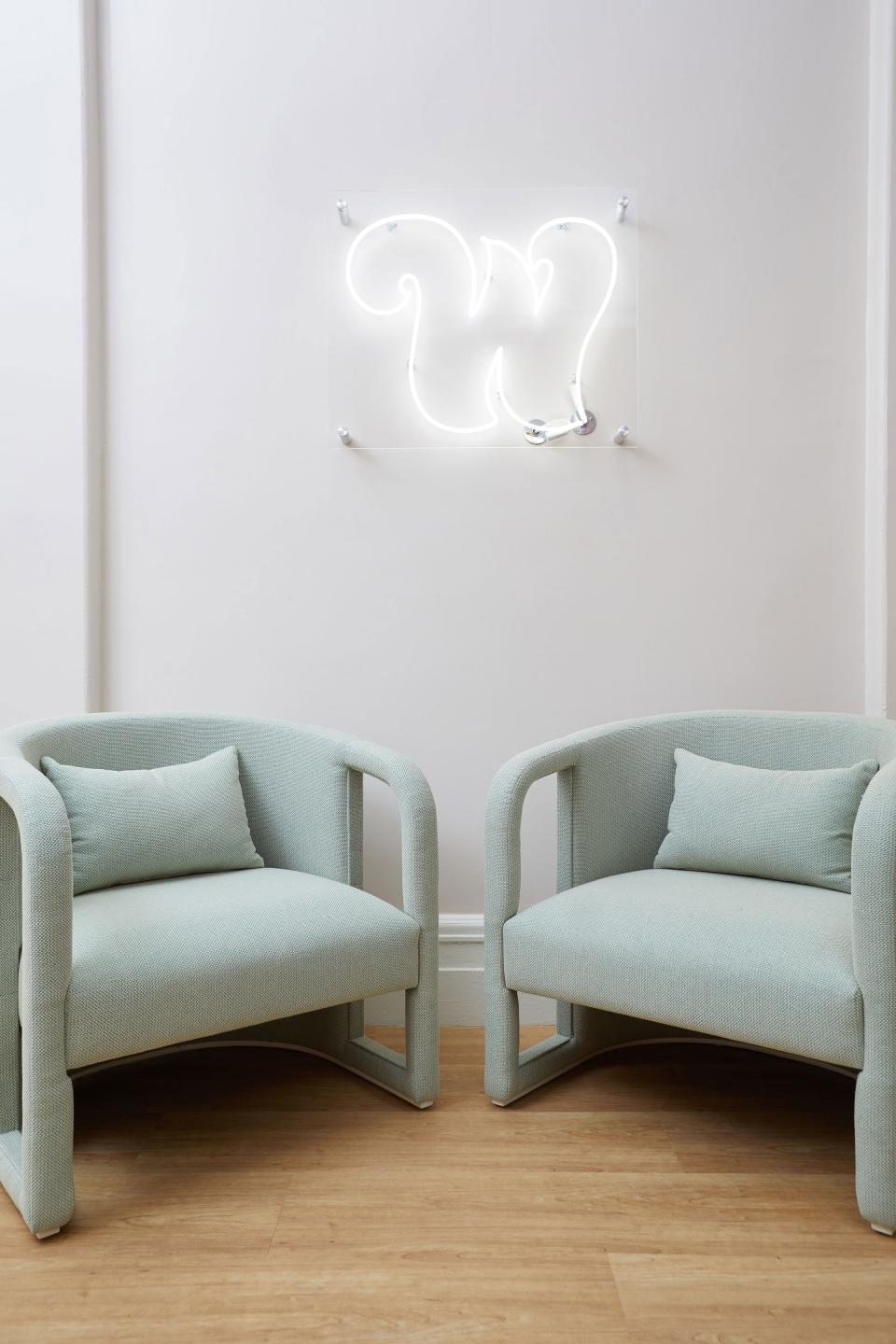
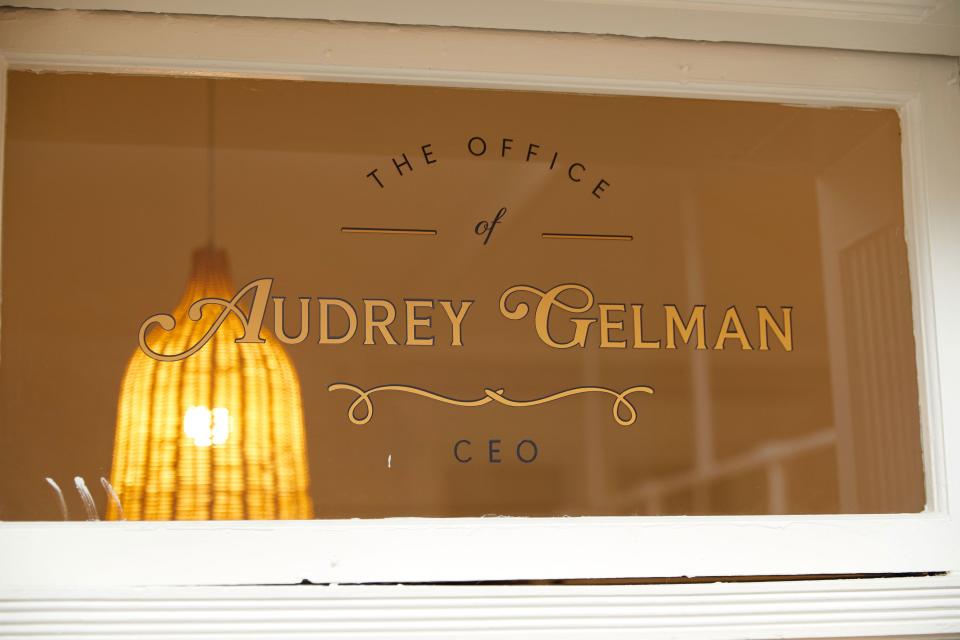
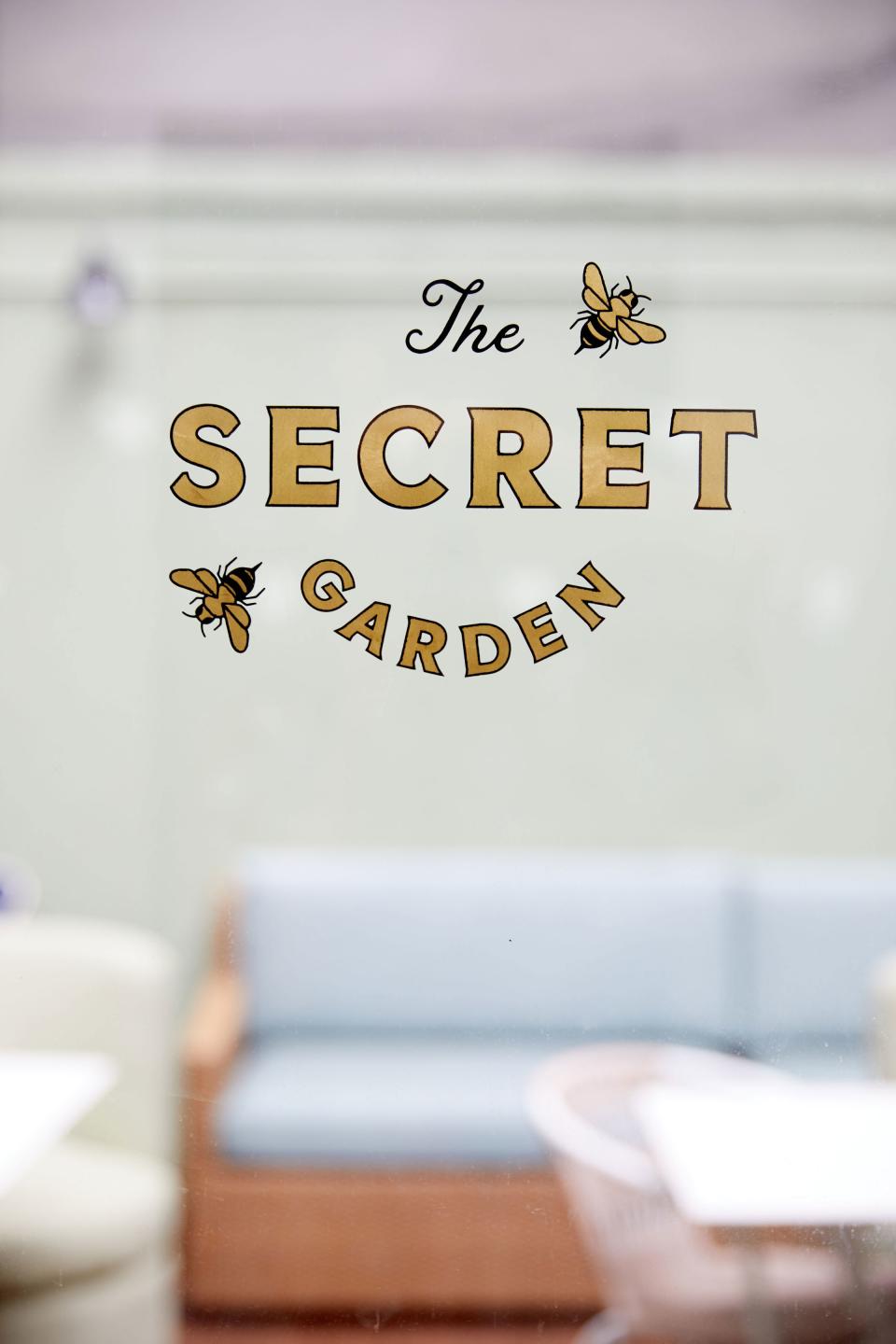
Originally Appeared on Architectural Digest
